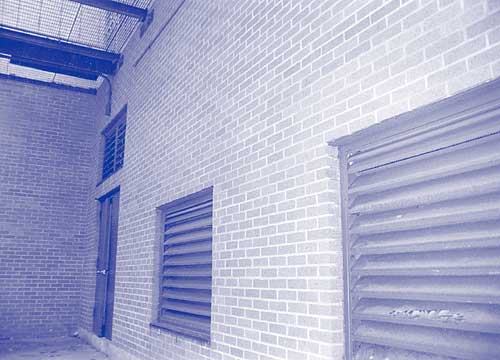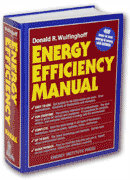Overview of …
4.2 Outside Air Intake and Building Pressurization
This part of the Energy Efficiency Manual presents the energy conservation measures that apply to outside air ventilation in central air handling systems. Outside air is taken into buildings in large quantities, primarily to maintain air quality. Heating, cooling, and dehumidifying this air accounts for a large fraction of the total cost of air conditioning.
The movement of air through the building determines the pressure relationships inside the building, and between the inside of the building and the outside. These pressure differences determine the amount of air leakage into the building, which can cause comfort problems and energy waste. In some buildings, such as hospitals and laboratories, these pressure relationships are also important for safety.
Building design often fails to pay adequate attention to these issues, resulting in air intake that does not satisfy ventilation standards. You can save energy, avoid health problems, and make the building more comfortable by the improvements that are explained here. One group of activities avoids unnecessary or excessive intake of outside air by better arrangements of intake fans, relief fans, exhaust fans, and dampers.
One way to reduce the need for outside air is to clean the inside air. You will learn all the important techniques, include HEPA filters, carbon filters, electrostatic filters, adsorbents, chemical treatments, and ultraviolet radiation. You will also learn how to control ventilation by sensing the concentration of carbon dioxide and other contaminants.
Using outside air to cool the inside of the building is an important energy saving technique. Here, you will learn how to design, install, and operate “economizer cycles” that perform this function. You will learn how to select temperature control or “enthalpy control” for your economizer cycles.
A related energy conservation control feature is a “purge cycle”, which is used to cool a vacant building overnight. The application and limitations of this control method are explained.
Another energy saving technique is recovering the heat (or cooling) from the building exhaust air. This energy is used to heat (or cool) the incoming ventilation air. You will learn the proven methods of air-to-air heat recovery, including sensible heat wheels, desiccant or latent heat wheels, heat pipes, runaround loops, and permeable heat exchangers.
Finally, you will learn how to solve common ventilation air intake problems, including wind problems, freeze protection, and stratification.
Click here to return to the Table of Contents


